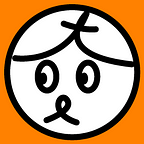Yakult: The hugely popular Japanese drink now sold in 33 region worldwide
The company announce increase in production in advance of further expansion abroad.
by IGNITION Staff
It would not be an exaggeration to say that practically every Japanese person has drank the milk-based drink “Yakult” at least once in their life. In September 2014 Yakult Honsha Co., Ltd. (who produce and distribute the beverage) announced that they will be further increasing their production abroad.
Invented in Japan in 1935, Yakult Co. Ltd. expanded into foreign markets and their products are currently sold in 33 countries and regions around the world (Japan included). It might be surprising to hear that, while Japanese beverage industries mainly focus on the domestic market, currently over half of Yakult’s profits are being earned abroad.
Yakult is a fermented milk drink full of bacteria that are scientifically proven to reach the gut alive. Each little bottle contains our unique strain of bacteria, Lactobacillus casei Shirota. When he developed Yakult back in 1935, scientist Dr Shirota was keen to choose a name that could be assessed globally, and so chose the word ‘Yakult’ from the ‘universal language’ of Esperanto. The word actually means ‘yoghurt’ ? but Yakult is not a yoghurt; it is a fermented skimmed milk drink. Both the company and the drink are called ‘Yakult’.
The 33 countries and regions where Yakult is sold:
Japan, Taiwan, Shang Hai, Thailand, South Korea, The Philippines, Singapore, Brunei, Indonesia, Australia, New Zealand, Malaysia, Vietnam, India, China, Brazil, Uruguay, Mexico, Belize, North America, Canada, France, Spain, Holland, Belgium, Luxembourg, England, Ireland, Germany, Austria, Italy, Malta, Switzerland.
When exporting domestic food and drink products to overseas markets, companies often encounter problems due to people having different tastes in different countries, so-much so that localization of the products to suit target market preferences is almost always necessary. Even then, cultivation of foreign markets is very difficult, so the majority of businesses adopt the strategy of either acquiring or forming a partnership with a local manufacturer.
However, when Yakult Honsha brought Yakult abroad they did not alter it for local markets and managed their sales network autonomously. However, they still managed to be hugely sucessful abroad, as shown by their figures.Their accounts for March 2014 show sales figures of 350 billion yen (a 9% increase from the previous month) and an operating profit of 32 billion yen (a 38% increase from the previous month). Of this, sales abroad accounted for 118 billion of sales (a 35% increase from the previous month), approximately 2.9 billion of operating profit (a 50% increase from the previous month). Currently, 32% of their sales are made in foreign markets.
Approximately 23.4 million bottles of Yakult are sold abroad every day, the majority being sold in Asia and Latin America. Including sales in Japan, about 32.4 million bottles are sold worldwide every day.
Yakult’s expansion abroad began in 1964 when they started exporting the drink to Taiwan. They then moved into other markets in East Asia and Latin America, including Brazil, Thailand and Korea. In the years following 1994, they added European countries (such as Holland, Belgium, and the UK) and China to their network. They made a decision early-on (in 1960) to move into Asian and Latin American markets rather than the North American market, which was dominated by domestic manufacturers. 50 years later, it is clear that this choice has had a direct impact on their success.
Their delivery service, exclusive to Japan and conducted by “Yakult Ladies” (a pun on the term “milk man”) who bring Yakult straight to your door, has also contributed to their success. So too has their mission to provide probiotic beverages with preventative medicinal properties “at a price anyone can afford”, which fits well with the market demands in emerging economic countries.
Production of Yakult abroad has increased from 31 million bottles per day in 2013 to 36 million per day in 2014. They are currently planning further increases in production, which will aim for a production of 42 million bottles per day from 2016 onwards.
(translation: Rebecca Bourke)
Originally published at ignition.co.
